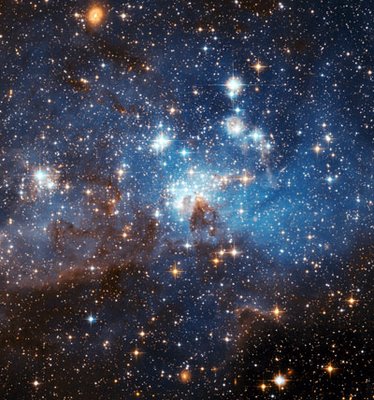Celestial season's greetings from Hubble

Known as LH 95, this is just one of the hundreds of star-forming systems, called associations, located in the LMC some 160,000 light-years distant. Earlier ground-based observations of such systems had only allowed astronomers to study the bright blue giant stars present in these regions. With Hubble's resolution, the low-mass stars can now be analyzed, which will allow for a more accurate calculation of their ages and masses.
The largest stars within LH 95 - those with at least three times the mass of the Sun - generate strong stellar winds and high levels of ultraviolet radiation that heat the surrounding interstellar gas. The result is a bluish nebula of glowing hydrogen that continues to expand out into the molecular cloud that originally collapsed to form these massive stars.
Read full Hubble report
Credit: NASA, ESA, and the Hubble Heritage Team (STScI/AURA)-ESA/Hubble Collaboration
Acknowledgment: D. Gouliermis (Max Planck Institute for Astronomy, Heidelberg)
Images and additional information about LH 95 are available on the Web at:
http://hubblesite.org/news/2006/55
http://heritage.stsci.edu/2006/55
Greener News Room
Keywords::HUBBLE SPACE TELESCOPE ADVANCED CAMERA FOR SURVEYS, LH 95, SEASON'S GREETINGS, SEASONS GREETINGS



9:06 AM









<< Home